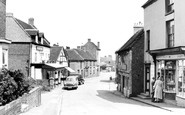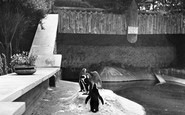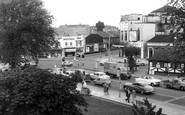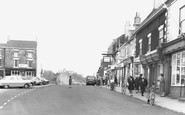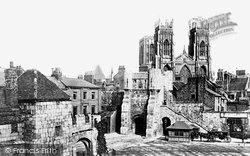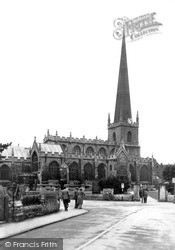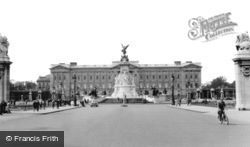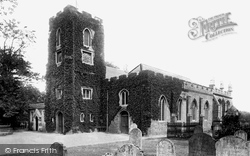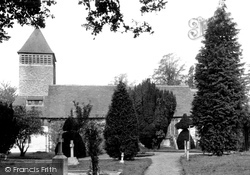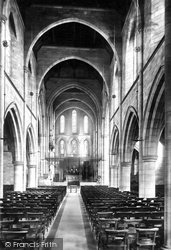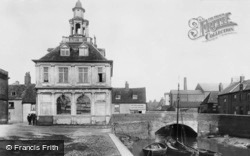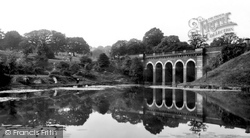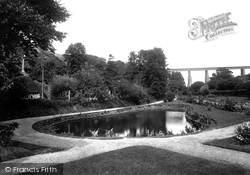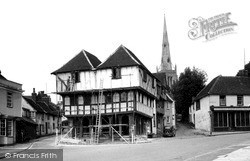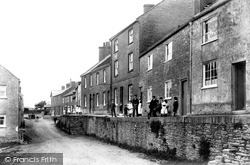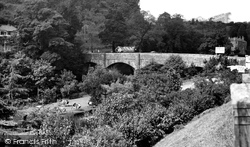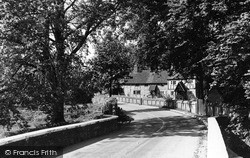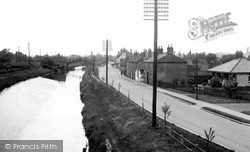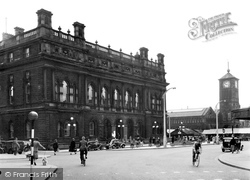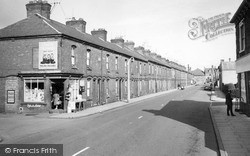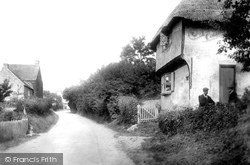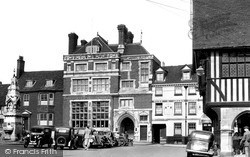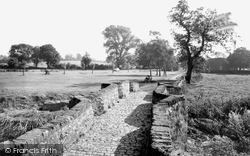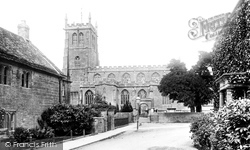Places
Sorry, no places were found that related to your search.
Photos
5 photos found. Showing results 441 to 5.
Maps
83 maps found.
Books
Sorry, no books were found that related to your search.
Memories
1,127 memories found. Showing results 221 to 230.
Find My Family The Flemings
Hello anyone who can help me! My dad was born in the Renton. I am trying to find any of my aunts/uncles or cousins. My dad's name was Alexander (Alec) Fleming. He was one of five brothers, Bill, Dan, Jim and Tommy. ...Read more
A memory of Renton in 1960 by
Running Errands In Market Street
One of the shops I remember well was Fosters. It was like a mini department store. We had some of our clothes from there. You could buy things and pay so much a week. It was how we lived then. It was quite ...Read more
A memory of Polesworth in 1960 by
Rowland Hill Ave
Tottenham. I was born in Tottenham 1948. I remember the White Hart Inn, Devonshire Hill Lane, and the dance hall at the back. Also the park round the back of the White Hart, where I spent so much time with all the kids from ...Read more
A memory of Tottenham in 1960
When My Life Was Innocent And Care Free
I am an American and from 1959 to 1965 my family of seven lived on '9 The Drive', in Wellingborough, Northamptonshire, England. We were there with my father who was a U.S. Airforce Seargent stationed ...Read more
A memory of Wellingborough in 1960 by
Tracing My Ancestors
Hello all, my name is Steve Lane and I found this site whilst tracing my family. As a kid I lived in [Conningsby Court] Armfield Cresent. My dad Alf Lane used to drink in the Buck's Head and as a kid I remember sitting outside ...Read more
A memory of Mitcham in 1960 by
Queens Hotel
My mother and father Vera and Fred Groves took over the Queens Hotel when I was a youg boy (BORN 1957). I remember the circus coming in the adjacent field. One day our dog Jip took ME for a walk down to the Flash reservoir much to ...Read more
A memory of Winsford in 1960 by
Hutts In Horspath
I was born in a house halfway up Cuddeston Road hill but at about 3 years old my family moved down into the village where we lived at Shipley House, next door to the Chapel and over the road from the village green. I remember ...Read more
A memory of Horspath in 1960
1960s In Bucks Mills
The earliest photo of me on Bucks Mills beach is in a pushchair from about 1951 -52! We were visiting for the day from my grandparents home in Bradworthy. In 1959 my grandparents, John and Gladys Dunn moved to Trundle ...Read more
A memory of Buck's Mills in 1960 by
My Travels With Mom
Travels brought me to my Auntie and Uncle's house above the Beauty Shop looking straight onto the photo. I loved them so much and their daughter, my cousin. I haven't seen them in years...don't know why. But this was ...Read more
A memory of Barton-Upon-Humber in 1960 by
Lost Love
I met my late wife Angela in Walkford in 1960 when we were both very young. I was on holiday on my motorbike with three of my pals, and she was on a bicycle. It was a hot August bank holiday. She lived in Heath Road and was very girlish ...Read more
A memory of Walkford in 1960 by
Captions
1,233 captions found. Showing results 529 to 552.
The light Chilmark limestone, quarried only ten miles away, contrasts with the dark Purbeck marble of the slender shafts supporting the arches.
The stone-arched building on the right was the postern tower built in 1497 on St Mary's Abbey walls; it is now an office for First York Buses.
The two-storey north porch has a two- centred arch. The east window dates from 1846- 48.
Marble Arch stood here in the Mall until 1850, when it was removed to its present position at the top of Park Lane.The Mall, an expansive and formal approach to the Palace, is fringed with limes
The yellow brick west tower has a re-used Norman zig-zag arch to the doorway.
The chancel and nave walls are more than 700 years old, and the nave arches were fashioned out of chalk from nearby Odiham.
The high arched ceiling is supported on slim pillars of pale stone, creating a light and welcoming interior. The pulpit is of alabaster and the screen of ironwork.
The opening in 1912 of the County Hall in Cathays Park provided a much-needed centrally contained administrative centre for Glamorgan.
It began life as the Merchants' Exchange, with an open-arched arcade on the ground floor. This was blocked in 1718 when the building was converted for use as a Customs House.
The five-arch later 19th-century red-brick bridge still rather pompously carries a narrow roadway across the pond in the south west angle of the Heath.
Its iron girders were replaced in 1939 with stone arches.
Controversially, he removed the plasterwork - thus exposing the timber-framing - and disposed of the 500-year- old arches between the posts on the ground floor.
It is best known for the beauty of the architecture of its two churches: the ancient building has been sympathetically restored, and the newer place of worship has four impressive stone arches
Dart Bridge is the first on the river to be built from anything other than granite - its four arches are constructed from local limestone.
At Water End, the River Gade runs under the fine three-arched bridge and through water meadows shaded by beech, willow and oak trees.
The arch is that to the 1911 pipe bridge that carries Lincoln's water from Nottinghamshire. The present footbridge is a Victorian one placed here in 1987.
This is how local historian W A Abram described the Town Hall: 'The west front, 120 feet wide, with an elevation of 63 feet, presents the main entrance in the centre, by three massive arched doorways
Here we glimpse the High Street through the arches of the Market Hall, which was built in 1627 at the expense of Sir Baptist Hicks.
Bootscrapers, timber-sashed windows and moulded brick arched heads to the ground floor windows and doors provide a quality so often lacking in modern housing.
The 19th-century squire, Sir Edward Cholmeley Dering, had every window in the village altered to have rounded lights under an exterior arch in the belief that this would bring good luck.
The storks in the spandrels of the doorway arch are often found on Gibson buildings. In the late 19th century the bank of the Gibsons amalgamated with others to form Barclays.
It is thought that Macbeth may have lived at Inverness Castle, or used it as a base for operations against the Orcadians.The suspension bridge superseded a stone bridge of seven arches, which was destroyed
On the south-east side of the village the five-arch stone bridge, perhaps of the 16th century, steps quietly across the very reedy Rotherby Brook.
To the left are the arched and mullioned windows of the 1661 Almshouses; partly hidden is Ashlar House, which is mid 18th- century and set at the corner of Pound Lane, which leads to the moated Manor
Places (0)
Photos (5)
Memories (1127)
Books (0)
Maps (83)

